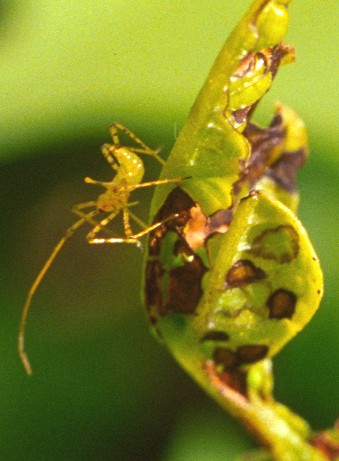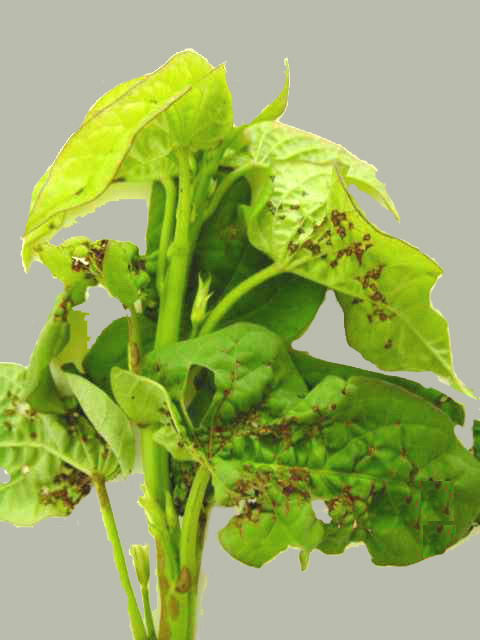|

A mirid bug nymph and lesions caused by its feeding on
a young leaf (J. OSullivan)

Dark lesions on leaves and stem, and crinkled leaves (E. Vasquez). |
Diagnostic
summary
- What they do to plants
- adults
and nymphs feed on young shoots of
sweetpotato. Feeding punctures
initially appear water-soaked but turn black after a few hours.
- toxic effect of the salivary
secretions causes a lesion at the puncture site.
- expanding leaves become puckered as
lesions constrict growth.
- stem lesions below the tip
cause tip death.
- young nymphs prefer to feed on the
growing shoot tips. Later instars feed on the
second and third leaf from the tip.
- Abundant during rainy season.
|
Taxonomy
Economic
importance
Geographical
distribution
Damage
Morphology
Biology
and ecology
Host
range
Management
References
View full fact sheet |

